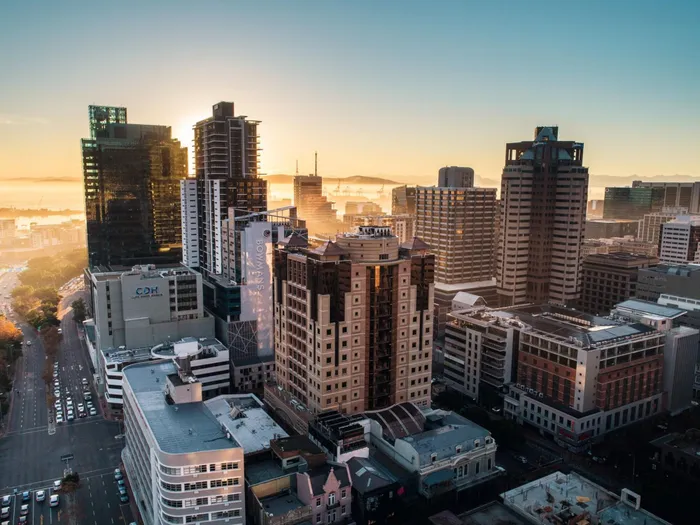Cape Town Tourism reflects on festive season

A report back on Cape Town’s festive season shows positive growth
While Cape Town was lively throughout the holidays, a report from Cape Town Tourism showed that the festive season in the city, which was recently named Time Out’s Best City in the World, painted a mixed picture compared to the previous year, with variations in visitor numbers and spending across different attractions.
Cape Town International Airport (CTIA) recorded a 3% year-on- year increase in passenger arrivals this December.
With 533 829 arrivals, the numbers align with forecasted growth, showcasing a strong festive season for one of Africa’s top destinations.
According to CTIA, the most notable growth came from regional arrivals, which surged by 22.5%, underscoring Cape Town’s appeal to neighbouring countries.
International arrivals increased by 3.7%, while domestic travel, which accounts for the most considerable portion of passenger numbers, grew by 2.3%.
The City’s mayco member for economic growth, James Vos, said Cape Town’s ongoing partnerships with airlines and the introduction of more frequent flights, including key seasonal routes, have been game-changers for our tourism sector.
Ahead of the festive season last year, Mayor Geordin Hill-Lewis and Mr Vos announced a partnership between Norse Atlantic Airways and the City of Cape Town, which saw Cape Town imagery on London’s taxi cabs, and the promotion of London-Cape Town flights.
Cape Town Tourism had also announced its three-way destination marketing partnership with visit Berlin and New York Tourism on World Tourism Day last year, marked annually on September 27.
According to Cape Town Tourism’s January Domestic Travel Take-up Report, which surveyed 1 100 South Africans, 54% travelled over the December holidays, of which 29% travelled to the Western Cape, which emerged as the most popular destination.

Attractions like the Table Mountain Aerial Cableway saw strong local support, with 70% of its December visitors being South Africans.
“It’s heart warming to see so many South Africans enjoying their backyard,” says Table Mountain Aerial Cableway executive director, Selma Hercules. “Despite some disruptions due to weather, we came close to pre-COVID numbers and even saw a slight increase compared to last year. It’s been a pleasure to welcome local and international visitors to experience our iconic mountain's magic.”
The report also showed that the local market was increasingly making use of alternative accommodation options, self-catering (36%), friends and family (35%), guesthouses (14%), hotels (11%), holiday houses (10%), Airbnb (7%) and camping or caravans (6%). An impressive 63% said that they were successful in reducing their travel spending by looking for discounts, specials and promotions (50%), spending less on eating out while travelling (49%) and cutting back on gifts/shopping (44%).
CEO of Cape Town Tourism, Enver Duminy, says the city’s ability to attract local and international visitors during the festive season shows its diverse offering.
“December proved that Cape Town is for everyone. The data shows that people are more geographically spread, which has always been our mission, to encourage visitors to explore further and spread the love. It is also clear that visitors carefully consider what they spend their money on, and there’s something here to suit every pocket.
Cape Town Tourism members indicated slightly improved business performance overall, with international visitors, primarily from the USA, UK, and Germany, remaining the largest contributors and accounting for approximately 70% of their business.
Cape Town Tourism represents a network of over 700 members. While no formal members’ performance was published this year, Cape Town Tourism engaged with members to gather general feedback, which has provided valuable insights into the season.

Some attractions, such as the Cape Point Nature Reserve, experienced sizable growth. The reserve saw a 15% increase in visitors compared to last year, while Chapman’s Peak Drive also recorded a 2% increase, and the Two Oceans Aquarium saw visitor numbers rise by 5%.
However, Kirstenbosch Botanical Gardens and Groot Constantia saw a dip in visitor numbers compared to 2023, mainly due to poor weather conditions and fewer events and a delayed start to Kistenbosch’ summer season.
Robben Island also reported fully booked tours but had to cancel tours on nine days in December due to bad weather.
Mr Vos welcomed Cape Town’s tourism sector’s impressive performance.
“Tourism isn’t just about visitors, it’s about jobs and opportunities,” says Vos. “The 2023 Gross Value Add of the industry for Cape Town was more than R27 billion in addition to supporting over 91 000 jobs.
Every single traveller is critically important for local businesses, industries and the economy and directly impacts economic opportunities for Capetonians.”
Vos notes that these achievements didn’t happen by chance.
“We’ve worked smart and hard to put Cape Town on the global map, securing connections to key source markets through strategic partnerships and innovative marketing campaigns. Every flight we land, every cruise ship that docks, and vehicle of visitors bring more business and jobs for Capetonians.”
“Tourism is the engine of Cape Town’s economy,” Vos adds. “From small businesses to large- scale operators, the knock-on effects are massive.
Our focus is on ensuring this sector's benefits are felt across the city, creating sustainable growth and real opportunities for our communities.”
The V&A Waterfront’s statistics had not been published yet.